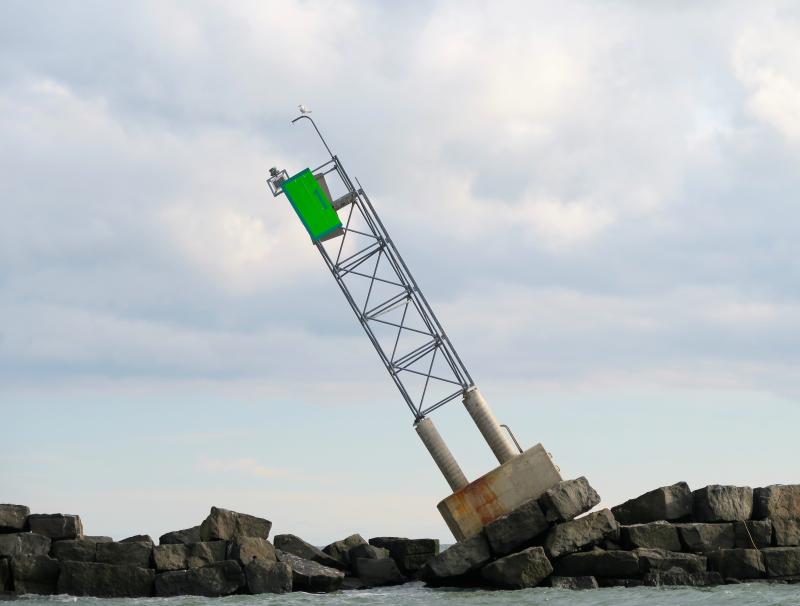December rains, a powerful sea, selling manure
Rehoboth Beach doesn’t get many breaks when it comes to its annual Hometown Christmas Parade. By the time we get into December here along the coast, cold and wet weather isn’t unusual.
In 2015, parade officials found just enough of a window in the radar to squeeze the parade in before the clouds opened. This year a look at the radar on Tuesday afternoon found no glimmer of hope. It’s tough to argue when the predicted rainfall holds steady for several hours at 100 percent.
Add the stiff and steady winds straight out of the east, and parade officials were looking at a miserable December soaker. They had little choice.
Going into the midweek rain, we were already, in 2016, ahead of the annual average rainfall for Sussex County by about an inch and a half. At 45 inches plus a little as of Dec. 4, we had passed our annual total average rainfall of 43 inches. This week’s rain put us even further ahead. That’s unusual based on the last several years when we’ve been running on the dry side of normal.
Power of the sea
The annual fall and early winter striper run is starting to show up in the mouth of Delaware Bay. Rob, Ross and I jumped aboard Nellie Lankford Sunday morning for an exploratory trip.
We trolled the rips outside the west end of the outer wall, cross-stitched our way back and forth across Hen and Chickens Shoal into the rising tide, debated the identification of a turkey vulture on the outer wall, and listened to late ‘60s and early ‘70s music from Alex Chilton of Box Tops and Big Star fame. We kept our ears tuned for the rapid ticking of a big rockfish taking off line, but we’re still waiting for that. It’s been too long.
At the western end of the Harbor of Refuge breakwater - known locally as the outer wall - the green No. 1 navigational marker is on its way to tumbling off the end of the rocks. The Coast Guard has already replaced that marker with a floating green light to guide incoming vessels away from the end of the wall.
Northeast wind-driven seas roll relentlessly against the wall, crashing into the explosive-cut granite blocks, lifting and moving their tons of weight as if they were blocks of balsa, relocating them according to nature’s whims, making a mockery of Corps of Engineers budget supervisors. It will be interesting to see how long the battered marker holds its 45-degree list before its base stone gets shifted off to one side or the other. Then it will become more of the structure favored by tog fishermen as well as Richard Martin and his spearfishing comrades.
Paying to relocate manure
People wonder sometimes why Rehoboth Beach has been ordered to remove its treated wastewater effluent from the Lewes-Rehoboth Canal while Lewes is permitted to discharge from its marshside plant into that same canal. The answer is based on dye studies by University of Delaware from years ago showing that very little of the treated Lewes effluent makes its way all the way through the canal to Rehoboth Bay. Tides carry the majority of the Lewes wastewater to Delaware Bay via Roosevelt Inlet. Different regulations apply to Delaware Bay and Rehoboth Bay.
Lewes Board of Public Works General Manager Darrin Gordon said the studies indicated that no more than 2.5 percent of the Lewes effluent reached Rehoboth Bay. But how about the nutrient-rich amount that actually does make it from Lewes into the Inland Bays. Isn’t that harmful to the system, even if only in a small way?
The answer comes on page 22 of the recent 2016 State of the Inland Bays Report published by the Center for the Inland Bays. Discussing sources of nutrients degrading the Inland Bays, the report notes: “Lewes is permitted to maintain its discharge to the Lewes and Rehoboth Canal and makes up for the small amount of pollution that reaches the Bays by funding manure relocation from the watershed.”
Gordon said in 2011, the BPW paid $5,000 to Delaware to pay for the relocation of 300 tons of chicken manure from the Inland Bays watershed to offset the nitrogen and phosphorus that make it into the system from the Lewes discharge. “Our system is so refined that very little nitrogen and phosphorus get into the effluent,” said Gordon. “Even though the studies found a 2.5 percent contribution to the Inland Bays, the formula used to determine our offset was made on a 5 percent projection. At that rate, we’re inputting between 30 and 50 pounds total of nitrogen and phosphorus per month. The 300 tons of manure we paid to relocate amounts to about 20,000 pounds of nitrogen and phosphorus, so our $5,000 payment should carry us for a long time.”
Delaware has a program designed to keep chicken manure nutrients out of waterways. It pays a contractor to haul loads of the manure to farms off the Delmarva Peninsula where it can be used as an affordable form of fertilizer. Farmers pay a discounted price for the natural fertilizer. These days, you can sell just about anything.





















































